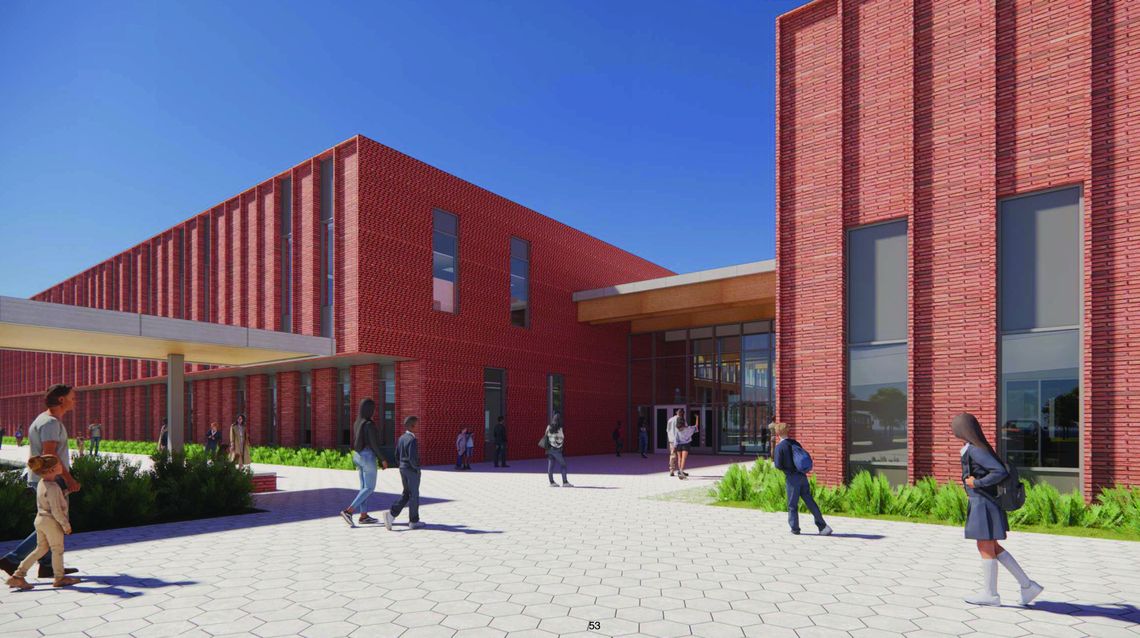SAN MARCOS CISD
The San Marcos Consolidated Independent School District Board of Trustees heard a presentation on the schematic design for the new Mendez Elementary School at the regularly scheduled meeting Monday. This is funded by the voter approved proposition B from 2023, which was a $147,725,645 bond that is meant to pay for updates to all 12 campuses including a replacement campus for Mendez Elementary School.
Perkins & Will - Austin Managing Director Koleman Uresti gave a presentation on the design to the board of trustees. He said the construction budget is approximately $57 million, and they are currently $1 million under budget.
“Again that’s just an estimate,” Uresti said. “We’ll actually have a contractor come bid, and we’ll know exact costs.”
Perkins & Will - Austin Senior Project Designer Travis Hughbanks said the building will be split into two parts.
“What was generated was around these two central courtyards. It’s the idea of a school that’s really being centered around a public side and an academic side,” Hughbanks said. “And both of those public and academic sides have secure courtyards, which we really want to activate through internal transparency in those courtyards.”
Uresti said that safety and security when approaching the site were a top priority.
“We intentionally have the play [area] not right up against the road,” Uresti said. “We have a very clear entrance. All traffic is coming in through one spot, so you’re able to see where traffic is coming from. You’re able to know who’s on your site [and] who’s approaching the building.”
Uresti said the bus drop-off location is completely separate from the student drop-off location and teacher parking lot. There is also a drop off location on site to get the cars off of the main road.
“We’re intentionally separating those out,” Uresti said. “Then we have our drop off for deliveries and those types of things completely separate from there. Driving an 18 wheeler through a parking lot is not always a good idea.”
Uresti said the academic wing will have the ability to be closed off at night so that people can only access the library, gym and cafeteria spaces. Kindergarten and first grade as well as administrative offices will be on the first floor, and on the second floor there will be second, third, fourth and fifth grades. Uresti said the design has a multipurpose outdoor learning space on the first floor as well. Uresti said the cafeteria is a cafetorium, so the stage is attached to the cafeteria. There is also direct access from the music room to the stage.
“[The design has] flexible learning spaces with easy access to electrical and easy indoor and outdoor access,” Uresti said. “Making sure we are visible, so we can see what’s happening inside spaces. So there is full collaboration and communication.”
Hughbanks said the exterior material will be burnt clay brick with weathered edges that is regional and durable. He said there will be heavy timber wood in the library.
Hughbanks said there will be multiple courtyards that will help “activate the school.” The exterior of the school will have less opacity. He said the interior color palette will use natural, earthy colors, and more vibrant colors will be used for differentiating the different grade levels.
“Once you get to the interior courtyard, we really want to open up that transparency and have that vegetation in those courtyards be easily accessible to students,” Hughbanks said, adding that there will be murals in the corridor that will be visible in the public courtyards because of the transparent design.
Hughbanks said there are six classrooms that are all focused around academic pods, which are central spaces that allow students to be pulled away for special education and other circumstances without separating them completely.
SMCISD Board of Trustees President Anne Halsey said that she would like them to consider adding additional water retention elements to assist with greenery in the courtyards.
“As well as anything we can do solar-wise with the spaces, I would be interested in seeing that as part of the design,” Halsey said.
Uresti said that she was “speaking his language” as there are other sustainability elements incorporated in the design. He said the design attempts to lower the carbon footprint by using wood in lieu of steel and by using a special type of concrete and reducing the amount used — concrete introduces the highest amount of carbon compared to other materials used in the design.
“Being under budget, we have some opportunities for cisterns,” Uresti said. “We have some opportunities for PV’s (solar panels) on the roof as well to help offset some energy costs.”
Uresti said the design should be ready to go out to bid in May.
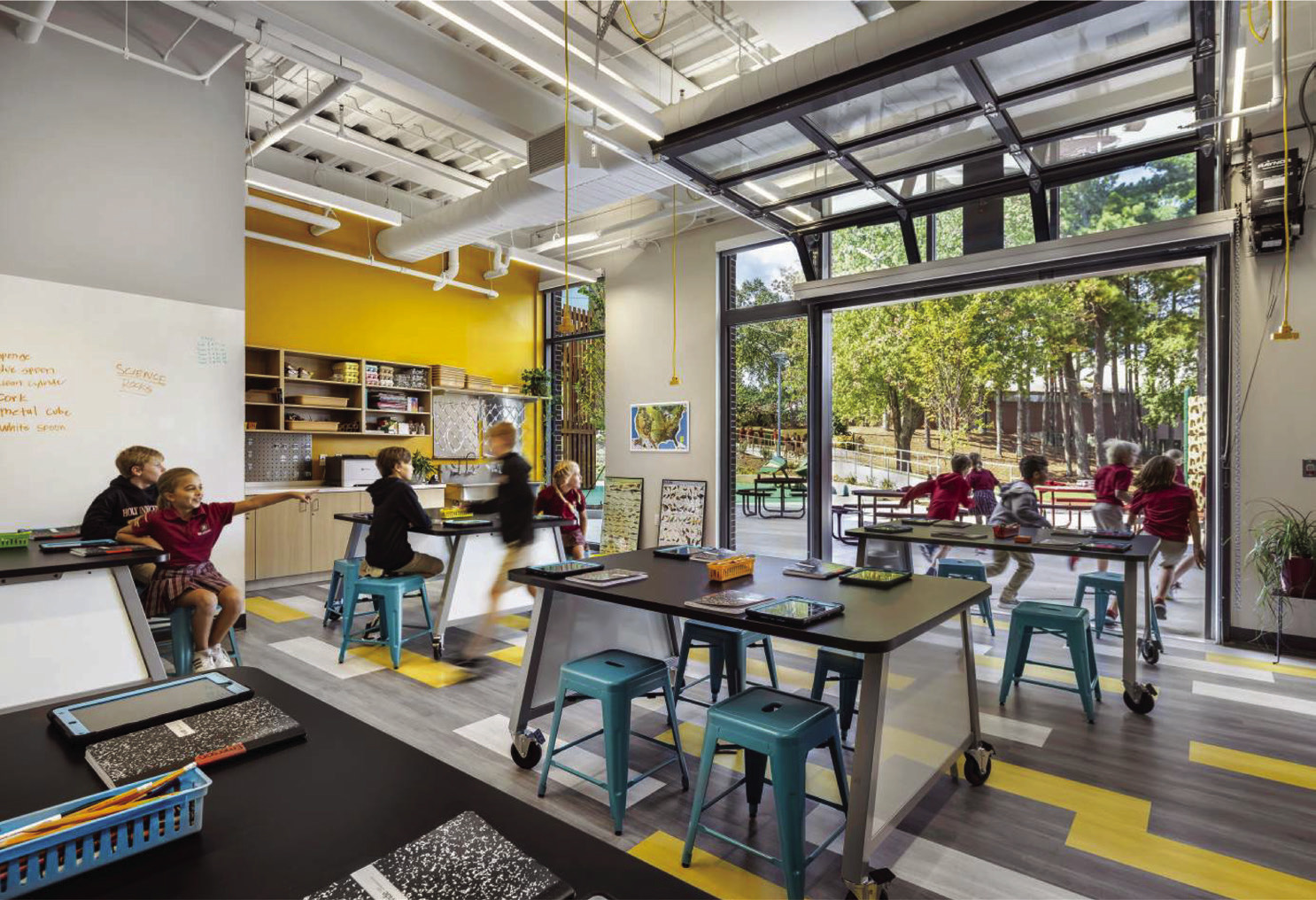
This image was one of the three most liked renderings from a visioning session helping guide the design firm’s interior plans. Renderings courtesy of Perkins & Will architectural firm
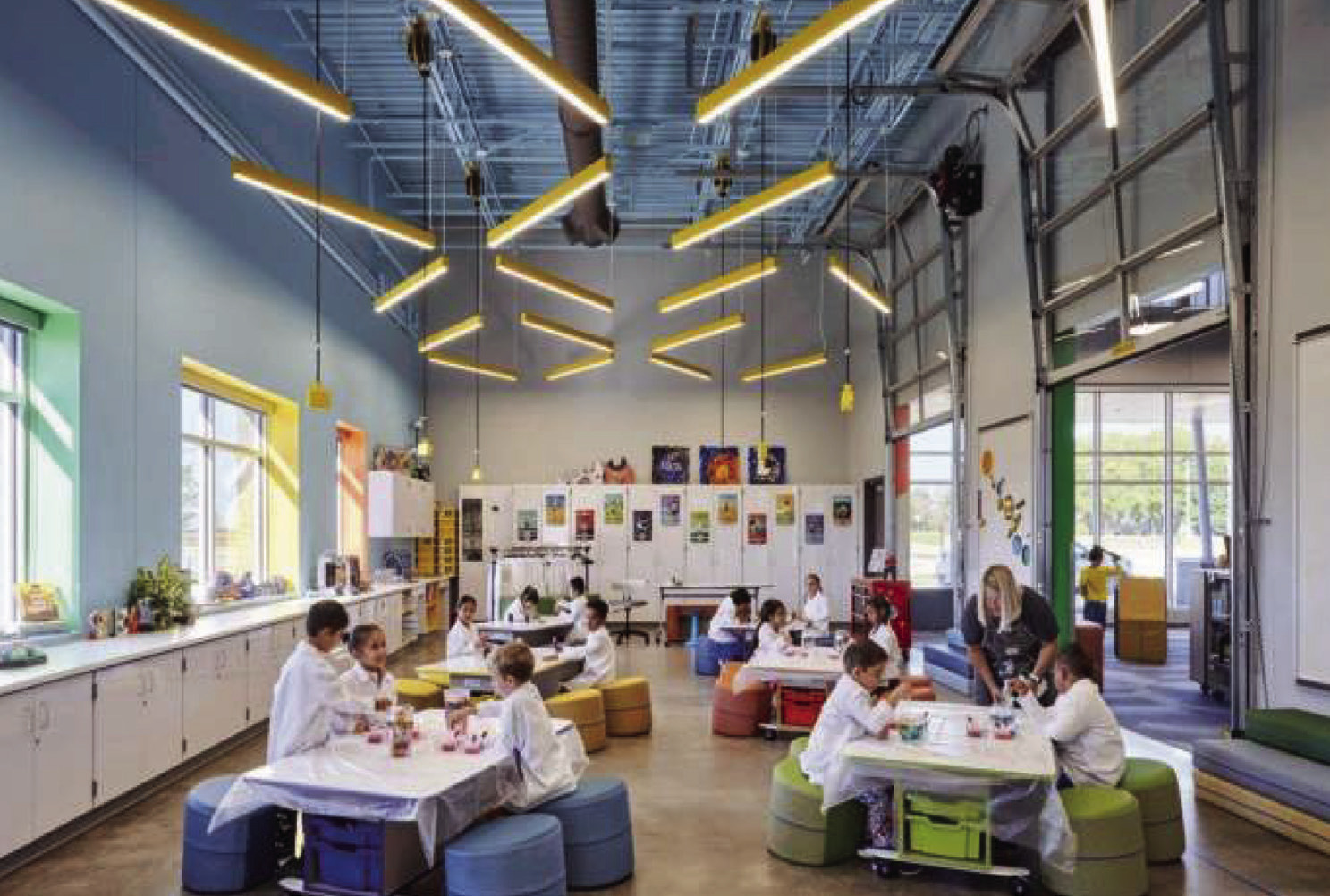
This image was one of the three most liked renderings from a visioning session helping guide the design firm’s interior plans.
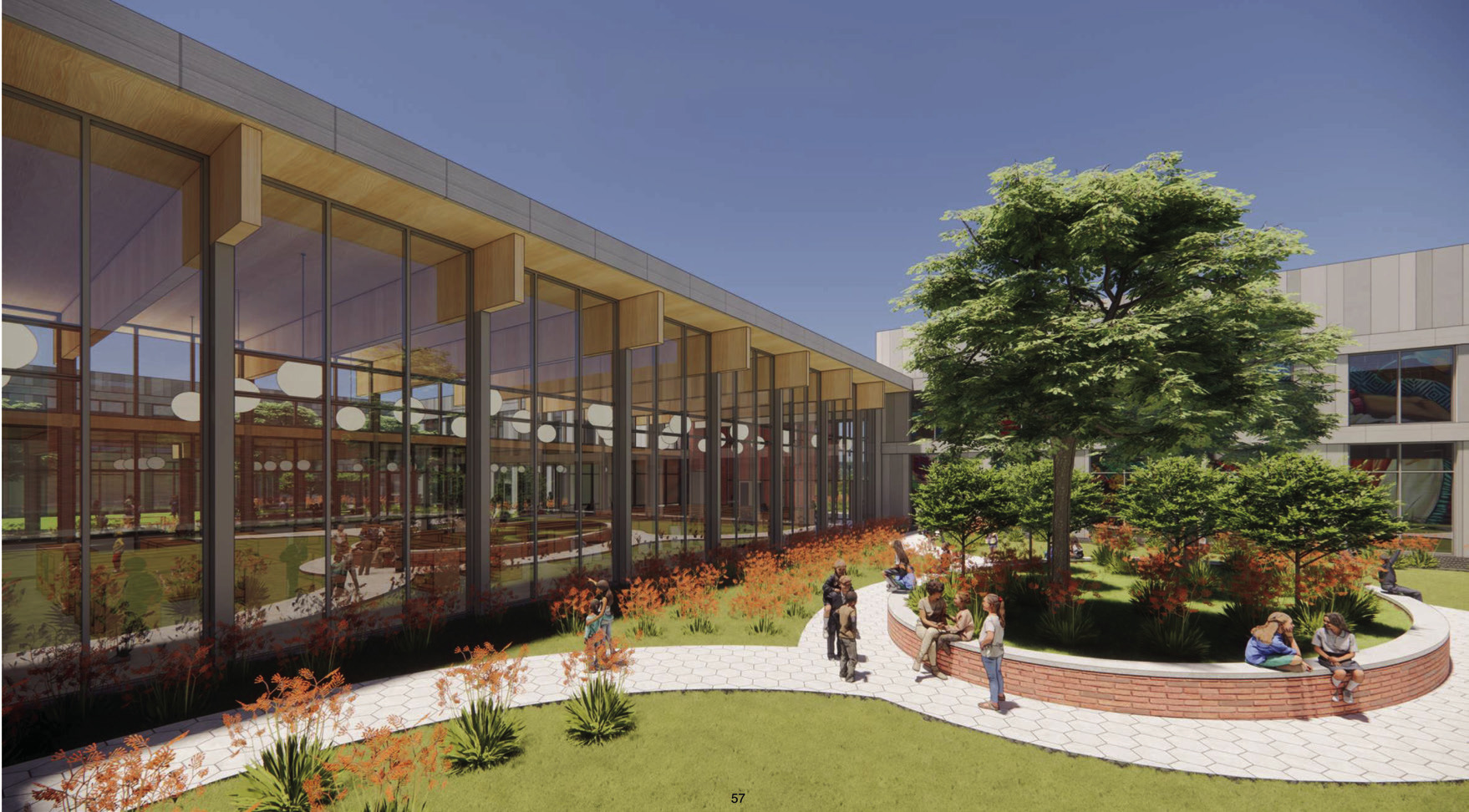
An exterior rendering of the library from public courtyard.
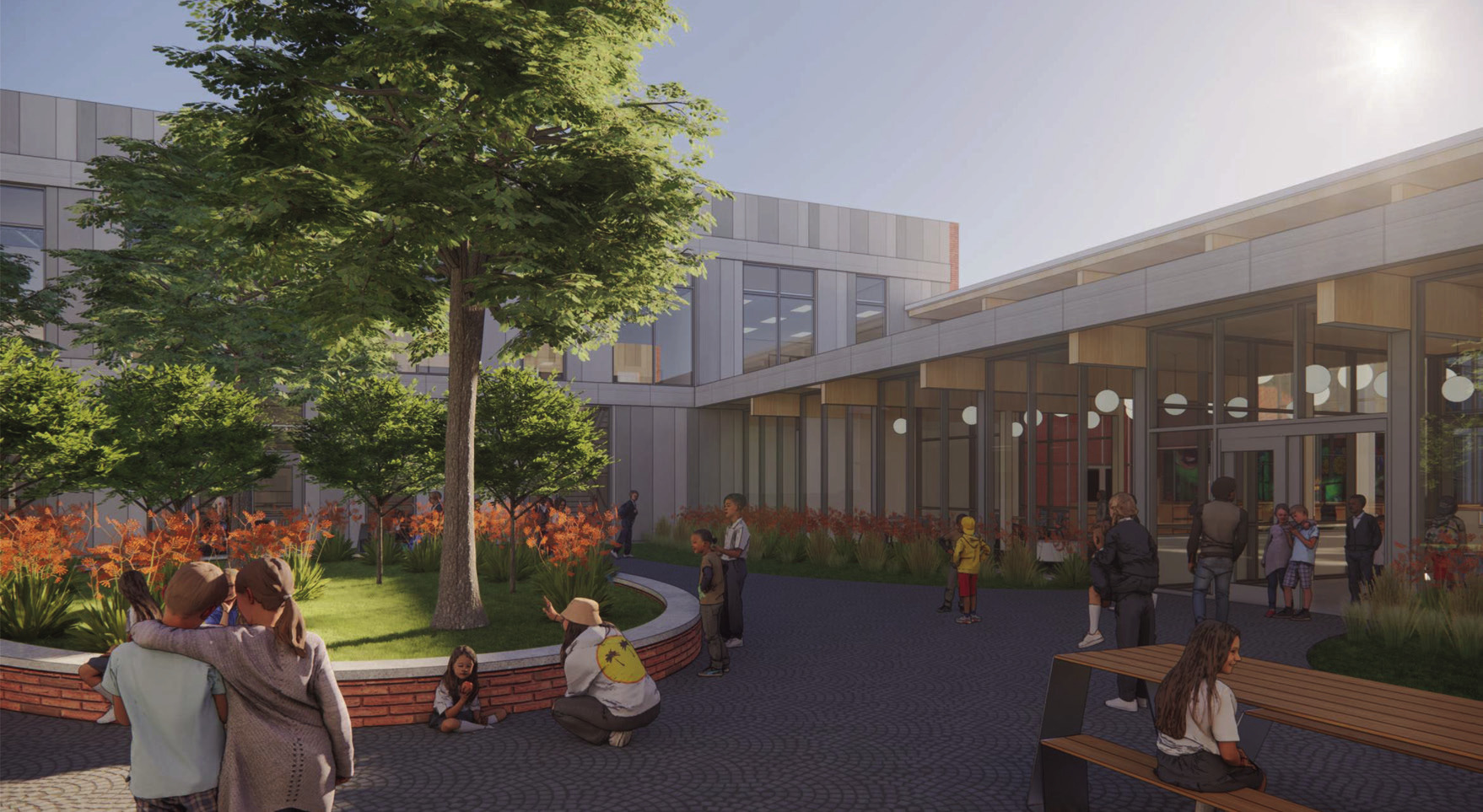
An exterior rendering of the Science section from the Academic Courtyard.
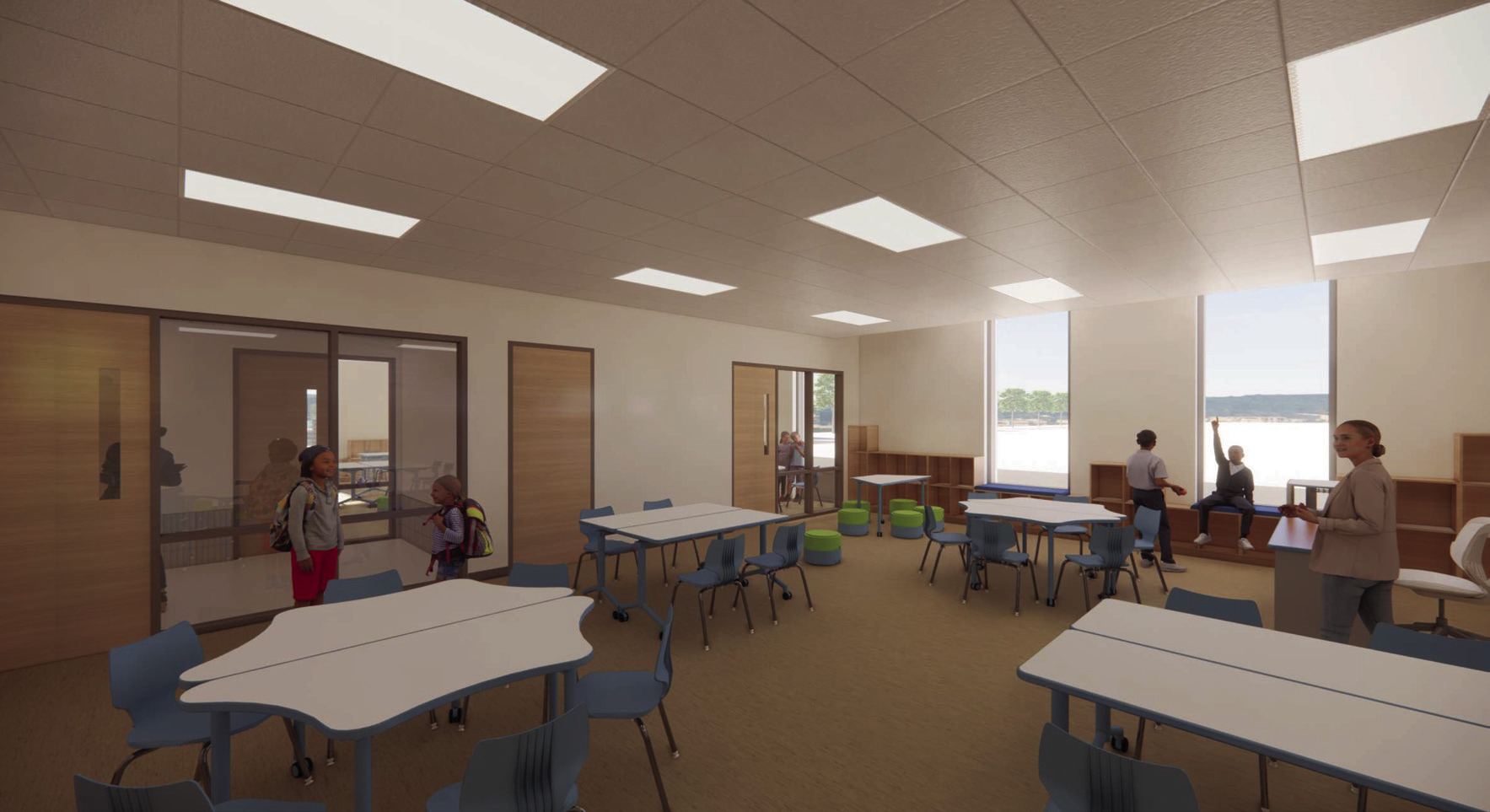
An interior rendering of a potential classroom.


